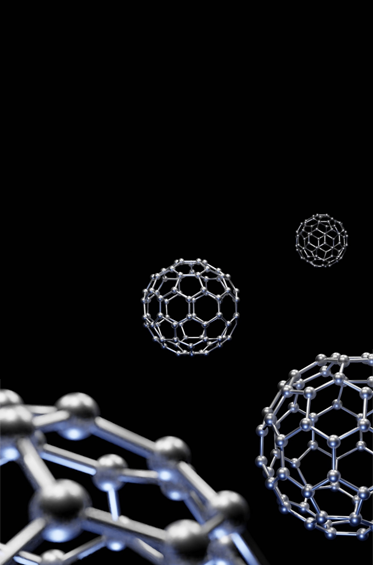As the global cosmetics industry races towards innovation, China’s regulatory landscape presents unique challenges for cutting-edge ingredients like exosomes. This article delves into the intricate world of nanomaterials regulation in one of the world’s largest cosmetics markets.
In recent years, the cosmetics industry has seen a surge in innovative ingredients, with nanomaterials at the forefront of this revolution. Among these cutting-edge components, exosomes have emerged as a particularly intriguing addition to skincare formulations in many parts of the world. However, in China, one of the world’s largest cosmetics markets, the regulatory landscape for nanomaterials is not only evolving rapidly but also presents significant restrictions, particularly concerning exosomes.
Understanding Exosomes and Nanomaterials
Exosomes are tiny vesicles released by cells, which have garnered attention in the global cosmetics industry for their potential regenerative and rejuvenating properties. These microscopic structures carry genetic material, lipids, proteins, and growth factors that can potentially activate other cells to benefit the skin.
In regulatory terms, exosomes fall under the broader category of nanomaterials. According to China’s National Medical Products Administration (NMPA), nanomaterials are defined as artificial materials that are insoluble or biologically non-degradable, with at least one dimension ranging from 1 to 100 manometers in their three-dimensional spatial structure.
China’s Regulatory Approach to Nanomaterials and Exosomes in Cosmetics
The NMPA has implemented stringent regulations for the use of nanomaterials in cosmetics, with a particular focus on safety assessments and quality control. However, it’s crucial to note that exosomes, along with stem cells, are not allowed in cosmetics in China. They are not included in the Inventory of Existing Cosmetics Ingredients in China (IECIC), which is the approved list of ingredients for use in cosmetics in the country.
Key aspects of these regulations include:
- Prohibited Ingredients: Exosomes and stem cells are explicitly not approved for use in cosmetics in China.
- Labeling Restrictions: It is prohibited to claim “exosomes” on any cosmetics in China.
- Quality Specifications: For approved nanomaterials, manufacturers must clearly define the quality specifications used in their formulas, including purity, crystal form, initial particle size distribution, and surface coating substances.
- Safety Assessments: A comprehensive safety assessment of approved nanomaterials in the formula is mandatory. For the ingredients which are lacking safety evidence and use the historical toxicology test data for evaluation, it is required to evaluate with a clear explanation of the testing methods used to ensure they are suitable for nano material detection.
- Inhalation Exposure Risks: Due to their small size, nanomaterials pose a high risk of inhalation exposure. As a result, the use of nanomaterials in products with potential inhalation exposure is discouraged.
- Children’s Cosmetics: The “Regulations on the Supervision and Management of Children’s Cosmetics,” effective from January 1, 2022, prohibit the use of raw materials prepared by new technologies such as nanotechnology in children’s cosmetics.
Case Study: Punishment for Exosome Claims
The strict stance on exosomes in cosmetics is not just theoretical. In a recent case, a company faced severe consequences for claiming the use of exosomes in their products. The local Medical Products Administration imposed a significant fine and ordered the company to cease production and sales of the offending products. This case underscores the seriousness with which Chinese regulators view unauthorized ingredients and claims in cosmetics.
Important Distinction: Registration vs. Approval
It’s crucial to note that even if an ingredient can be Declared in the NMPA raw material declaration platform, it does not automatically imply that the ingredient is allowed in cosmetics in China. This distinction is vital for companies looking to enter the Chinese market. Raw material declaration can be directly done by the raw material suppliers without any restrictions, which is merely a procedural step and does not equate to approval for use in cosmetic products.
Implications for Cosmetic Companies
For companies looking to introduce innovative products to the Chinese market, these regulations present significant challenges:
- Ingredient Restrictions: The prohibition of exosomes and stem cells limits the types of cutting-edge formulations that can be marketed in China.
- Rigorous Compliance: Manufacturers must ensure strict adherence to the IECIC and avoid any claims or ingredients not explicitly approved.
- Market Strategy: Companies must adapt their global product lines and marketing strategies to comply with China’s unique regulatory environment.
- Innovation within Boundaries: While exosomes are off-limits, companies can still innovate using approved ingredients and technologies.
The Future of Cosmetic Innovations in China
Despite the regulatory hurdles, the potential for innovation in the Chinese cosmetics market remains significant. As research continues and clinical studies provide more data on the safety and efficacy of various ingredients, it’s possible that Chinese regulations may evolve. However, for now, companies must navigate a complex and strict regulatory landscape.
Conclusion
The regulation of cosmetic ingredients in China, particularly concerning nanomaterials and innovative components like exosomes, reflects a careful and conservative approach to ensuring consumer safety. As the global cosmetics industry continues to advance, staying informed about the latest regulatory requirements in China is crucial for any company looking to succeed in this vast market.
For companies aiming to enter or expand in the Chinese cosmetics market, expert guidance is essential to navigate these complex regulations successfully.
Call to Action
Need expert assistance with navigating China’s cosmetics regulations? Contact Knudsen&CRC for comprehensive regulatory support and strategic advice tailored to your innovative cosmetic products.
